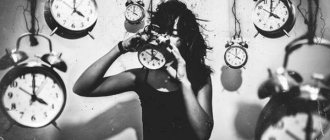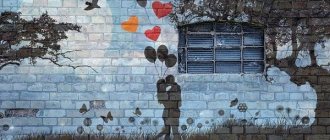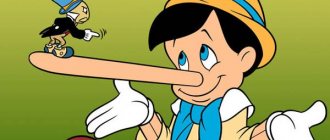An archetype is...
Archetype (from the Greek arche beginning + typos image) is a concept introduced by K.G. Jung to designate the original primitive images, universal symbols or motifs that exist in the collective unconscious and appear in the dreams of each of us.
They are repeated in the plots of myths and fairy tales of different peoples, since they have been “stored” in the collective unconscious since the first days of humanity.
- Dragon, hero, sage, mother, treasure are examples of archetypal images.
- “Hero slaying the dragon”, “struggle between good and evil” are archetypal motifs.
According to Jung, archetypes are also “centres saturated with energy”: due to unresolved problems, they appear in our dreams. Archetypes are signs of internal evolution and keys to solving problems. Of course, provided that we can understand such a message.
Archetypes in branding
The concept developed by K.G. Jung, has found practical application in an industry such as branding. Archetypes in branding are used to create a unique image of a company, product or personality. Based on the use of ideas from the theory of archetypes in business, you can:
- In a short time, draw up a psychological portrait of the client, defining his value system. This information is necessary in individual work with a client: it determines the style of communication between the seller and the buyer and the choice of one or another sales tactic.
- Attract the right target audience to the company.
- Develop an effective personnel policy that involves competent selection of personnel and rapid career advancement of promising employees.
- To create a psychologically healthy corporate culture of the organization.
If we explain the terms verbal, archetype, symbol, shadow, ego, we get a summary of the main ideas of archetypal psychology. In modern reality, the concept of archetypes developed by Jung finds application in many areas of economic life.
Archetypes in life
Personality structure according to Jung
The ego is the conscious mind. It is constructed from conscious perceptions, memories, thoughts and feelings. The ego is responsible for the sense of identity and continuity and, from the point of view of the individual person, is seen as the center of consciousness.
The personal unconscious is the region adjacent to the Ego. It consists of experiences that were once conscious but have been repressed, repressed, forgotten or ignored, and of experiences that, when they first appeared, were too weak to make an impression on the conscious level.
The contents of the personal unconscious are accessible to consciousness: there is a strong “two-way traffic” between the personal unconscious and the ego.
The collective (or transpersonal) unconscious is the most powerful and influential mental system, and in pathological cases it overlaps the ego and the personal unconscious (C. Jung, 1936, 1943, 1945).
The collective unconscious is a repository of hidden memories inherited from ancestors; this inherited past includes not only the racial history of humans as a distinct biological species, but also the experiences of prehuman and animal ancestors.
It is almost completely separated from the personal in the life of the individual, and, apparently, is universal.
The collective unconscious is the innate, racial basis of the entire personality structure. The ego, the personal unconscious and other individual acquisitions grow on it.
The structural components of the collective unconscious are called archetypes (dominants, primordial images, imagoes, mythological images, behavioral patterns).
An archetype is a universal thought form (idea) containing a significant emotional element.
This thought form creates images or visions that, in ordinary waking life, correspond to some aspect of the conscious situation. For example, the mother archetype produces an image of the mother, which is then identified with the real mother.
It is assumed that the collective unconscious contains many archetypes.
Although all archetypes can be considered as autonomous dynamic systems, relatively independent from the rest of the personality, some have developed so much that they fully justify treating themselves as separate systems within the personality.
These are: Persona, Anima, Animus, Shadow.
A person
A persona is how we present ourselves to the world.
It includes our social roles and individual style of expression. A person has both positive and negative aspects. The Dominant Persona can suppress, even stifle, individuality.
Those who identify with their Persona begin to see themselves only in terms of their superficial social roles or façade. C. Jung also called the Persona the archetype of conformity.
At the same time, the Persona is not only negative, it protects the Ego and the soul as a whole from various social forces and attacks aimed at it. Persona is an excellent communication tool.
Animus, anima
Animus, anima. C. Jung postulates unconscious structures that represent introsexual communication in everyone’s soul.
The feminine archetype in a man is called Anima, the masculine in a woman is called Animus.
These archetypes not only cause each sex to have traits of the opposite; they also act as collective images that motivate each gender to understand and respond to the other.
Shadow
The Shadow archetype is the center of the personal unconscious, a focus for material that has been repressed from consciousness.
It includes tendencies, desires, memories, experiences that are denied by the individual as incompatible with his persona or contrary to social standards and ideals.
Self
The Self is the center of personality around which all other systems are grouped.
It holds these systems together and provides the individual with unity, balance and stability.
The self is a goal that people constantly strive for, but rarely achieve. Before the self can be embodied, the various components of the personality must undergo full development and individuation.
According to K. Jung, a person can achieve balance only as a result of a long process of psychological maturation, which he calls individualization.
How to determine your archetype
Many people not only hear and encounter the term “archetype,” but also use it in their speech, not always fully understanding what it is. But in fact, this is an important part of every personality, and, if you believe a number of theories and teachings, it is based on archetypal images that a person subconsciously chooses his social circle, life goals and his entire destiny.
Carl Gustav Jung introduced the concept of archetypes along with his theory of personality structure.
“Anima and Animus” are the archetypes of personality, which represent the very collective unconscious; they have a huge influence on the development of a person’s personality and his destiny.
In fact, what an archetype is is a person’s subconscious ideas about what an impeccable image of a woman and a man is. Moreover, these archetypal images are transmitted to us from our ancestors, through their experience, characteristics of upbringing, and folklore.
Male and female archetypes “sit” firmly in the consciousness, but they do not have any origins in a particular person, while producing a colossal influence on a person’s choices, actions, judgments, throughout his entire life.
To put it even more simply, this is a set of ideal qualities and images that have no real reflection in any particular person.
Archetypes, according to Jung, are always stable and constant, they do not change in a person and carry both positive and negative qualities. Archetypes are found in folklore - in fairy tales, stories, histories and myths, finding their origins and reflection there.
Also, archetypes always evoke an emotional reaction in a person and are capable of changing his state of mind.
Jung's archetypes would be correctly called models of human behavior that are based on subconscious ideas about ideal behavior and image. The research is detailed in Jung’s book “Archetype and Symbol”.
Jung's Basic Archetypes
Self-knowledge - what is it in psychology and philosophy
Personality archetypes, speaking in the language of psychology, are the result of the work of consciousness. They contain a connection between simple mythological images stored in the unconscious layer and the cognitive actions of the individual.
Basic examples of archetypes according to Jung are self, sage, anima, animus, shadow, persona:
- Self. This is a prototype of personality integrity, uniting its conscious and unconscious components. He is responsible for the balance of personality traits.
- Sage. It is characterized by the predominance of the spiritual over the material. Such people are calm and attentive. In interpersonal interactions, they give the impression of an uncommunicative, cold person, but in reality this is not so: sages are alien to idle talk, but they will eagerly join in a constructive, highly intellectual conversation if you bring them up to date. They like to do science, create something new on their own, and help others.
Sage
- Anima. It characterizes the presence of feminine traits in a male character. The degree of its severity determines the stability of a man’s mood, his level of emotionality, and his ability to express his feelings. Men whose anima is pronounced are irritable, quick-tempered, and easily excitable.
- Animus. The prototype determines the presence of masculine qualities in a woman. The degree of its expression determines a woman’s analytical abilities, her rationality, and balance. An interesting fact is that the animus can have different polarities: positive or negative. The positive one determines the girl’s law-abiding behavior, and the negative one pushes her to various reckless actions.
- Shadow. This is a structure that explains a person’s negative personal characteristics. The individual carefully hides them. The shadow is also responsible for a person’s aggressive actions, his unacceptable thoughts and passion.
- A person. It assumes that a person has different behavioral stereotypes. The more developed a person is, the more social masks and images a person has. A persona manifests itself only in a group and is designed to facilitate social interaction.
Important! Archetypal structures are not patterns of behavior given to a person once and for all. They can change as a result of the individual’s communication with significant adults. Their change is a source of change in a person’s life.
Archetypes according to Jung are divided into feminine and masculine.
Feminine archetypes
By female archetypes, Jung understood a woman’s inherent program of self-realization, which stimulates her personal growth. She represents the scenario of a woman's life. Jung's female archetypes are :
- Eve. This is the archetypal image of a simple woman, capable of giving birth and raising a child, creating comfort in her home, and taking care of her husband.
- Elena. The presence of the image of Elena in the unconscious layer gives a woman eroticism and sensuality. She is fluent in the art of seduction, she likes to conquer men's hearts. However, in order for family life to develop successfully, such girls need to connect the Eve archetype to the dominant archetype of Elena.
Archetype Elena
- Maria. This is an image of immaculate virginity. Men rarely see her as a life partner or lover. But she can become a reliable, loyal friend for any guy.
- Sofia. This is a manifestation of feminine wisdom. Such girls belong to sensitive people who have well-developed intuition. If a quarrel breaks out in their presence, they are able to help the conflicting parties make peace. Innate wisdom helps to maintain mutual understanding and friendly relations with your husband, and to successfully raise children.
Attention! If a girl has one of the unconscious images listed above coming to the fore, this does not mean that she does not have other images. Under certain circumstances, the dominant archetype may fade into the shadows, giving way to another image that will be more relevant at the moment. To find happiness, a woman needs all 4 female psycho-images and their skillful, conscious use.
Male archetypes
The linguistics of Jung's theory offers the following images to characterize male archetypes:
- Warrior. It is characteristic of a young man who strives to win at any cost. In achieving the goal, he uses all available methods and means, strives for self-improvement and self-development.
- Monarch. This is a good leader, both at work and at home. Such a man has rational thinking and loves order. He readily takes responsibility for any assignments.
- Merchant. This image is characteristic of cunning and calculating young people. They calculate the outcome of a situation, know how to be flexible in communication, and have developed communication skills. As a rule, they quickly move up the career ladder.
- Peasant. Such a man is ready to work hard for the benefit of the family. He likes stability. He may express dissatisfaction with the level of wages, but he will not take decisive action to earn more, because he is afraid of losing what he has.
- Philosopher. This is the image of those young people who are easily inspired by new ideas and love to master new activities. They like to ask questions about the meaning of life, love, death.
- Monk. It is characteristic of obsessed people who are ready to sacrifice their lives to serve one or another idea.
Monk
- Servant. The image characterizes a weak personality. Such men find happiness next to strong women. They are never leaders. Fearing to express their opinion, they agree with the proposals of a more authoritative person.
Attention! If the signs of a particular archetype clearly come to the fore in an interlocutor or work colleague, you should not draw hasty conclusions - it is quite possible that the person purposefully chooses a model of behavior, wanting to achieve a specific goal.
Examples of archetypes described by Jung
| Archetype | Definition | Symbols |
| Anima | The unconscious feminine side of a man's personality | Woman, Virgin Mary, Mona Lisa |
| Animus | The unconscious masculine side of a woman's personality | Man, Jesus Christ, Don Juan |
| A person | The social role of the individual stemming from social expectations and early learning | Mask |
| Shadow | The unconscious opposite of what the individual persistently asserts in consciousness | Satan, Hitler, Hussein |
| Self | The embodiment of integrity and harmony, the regulating center of personality | Mandala |
| Sage | Personification of life wisdom and maturity | Prophet |
| God | The ultimate realization of psychic reality projected onto the external world | Sun's eye |
Jung believed that each archetype is associated with a tendency to express a certain type of feeling and thought in relation to a corresponding object or situation. For example, a child's perception of his mother contains aspects of her actual characteristics, colored by unconscious ideas about such archetypal maternal attributes as nurture, fertility and dependence.
Further, Jung suggested that archetypal images and ideas are often reflected in dreams, and are also often found in culture in the form of symbols used in painting, literature, and religion.
In particular, he emphasized that symbols characteristic of different cultures often show striking similarities because they go back to archetypes common to all humanity.
For example, in many cultures he came across images of mandala, which are symbolic embodiments of the unity and integrity of the “I”. Jung believed that understanding archetypal symbols helped him in analyzing a patient's dreams.
What it is?
This term, which was very often used in mythology, in works where theoretical analysis was carried out, was first introduced into psychology by Jung.
The term archetypes itself, translated from Greek, meant “prototypes.” However, Jung gave this term a different meaning. According to Jung's interpretation, archetypes are the initial patterns of various images reproduced on an unconscious level, which in turn activate a person's imagination. And all this subsequently begins to be reflected in various myths, in dreams, in beliefs, in the fantasies of the individual and even in art.
It is important to understand here that the archetypes themselves are not images, they are only diagrams. In other words, archetypes are a psychological prerequisite, a possibility.
Jung's archetypes have a formal characteristic. The first characteristic appears when the image penetrates consciousness and is filled with material experience. Jung himself believed that the process of myth-making is a kind of transformation of a concept into an image. These can be involuntary statements that are attributed to mental events and, basically, they are of an unconscious nature.
And although the archetype is something generalized, formal and meaningless, it still has properties. Experts are confident that, based on the level of clarity and emotional richness, archetypes can impress and captivate human nature. And after this, an artistic prototype for creativity appears.
In addition, Jung argued that humanity inherits archetypes, that is, prototypes are a collective unconscious heritage.
And the archetypes themselves are located in the deep unconscious of the individual, and the unconscious, in turn, goes far beyond the boundaries of the individual.
To study this concept, specialists are looking for answers in the ethnic, typological variety of plots that would correspond to the search. These may be the motives of the archetypal core, which mythologists expressed in metaphors.
Examples
In his work, the great psychoanalyst tried to outline this concept. It was for this reason that Jung formulated the archetypes of the unconscious. Let's look at a few of them individually below:
- Anima - according to Jung's definition, is the human unconscious principle of the opposite sex. In mythical images, this archetype is conveyed in the images of bisexual creatures or, from the Chinese category, the famous Yin-Yang.
- A wise old man is already a prototype of spirit and meaning, which is hidden in the chaos of life. In the myths of different peoples, he was represented as a wise wizard, a shaman, or as Nietzsche’s Zarathustra.
- Great Mother - in all mythologies, despite culture, this prototype has been interpreted in different versions: for example, goddess, witch, norm, moira, Mother of God and the like. In all these images, the archetype of the highest feminine principle was embedded, which realizes the psychological sensations of generational change, giving humanity a taste of immortality or the illusion of power over time.
- And the image of Prometheus and Epimetheus in Jung’s archetypal interpretation is presented as a contrast in the psyche of the “Self,” that is, the individual-personal principle in particular of one of its parts, the “Persona,” which is turned outward.
All these concepts and interpretations of mythology have led to changes in the study of religions and ancient myths. Because after this, researchers began to look at existing images completely differently.
Jung's Basic Archetypes
The prototypes themselves, when viewed within the collective unconscious, are infinite. However, Jung himself in his theoretical system attached special importance to only five archetypes. In these prototypes he tried to reveal the whole essence of the unconscious.
- Mask - if we translate this archetype from Latin, then it is a guise, the public face of an individual. In other words, this is how a person appears in interpersonal relationships. The mask itself is a symbol of many roles that a person uses based on social requirements. Jung himself interpreted this archetype as a way to achieve a goal: either to make a good impression on others, or to hide one's true nature.
- Persona - if you look at it as an archetype, then it is a necessary part of the human psyche, which helps him establish contact with others in life. But the psychologist himself warns in his works that if this archetype is given great importance, it can lead a person to such undesirable consequences as superficiality. And all because the persona alienates a person from true emotional experience.
- Shadow - this archetype is the opposite of the “mask” archetype. This is the dark, bad, animal side of an individual, which a person tries to suppress all his life. It is in the “Shadow” archetype that all aggressive, sexual impulses, immoral passions, thoughts that are simply unacceptable in any society are hidden. And despite all this, the author was sure that this archetype also had its advantages. As the researcher argued, it is the Shadow that is the source of vitality, this is the creative principle and spontaneity in the life of every individual. And based on this concept, the main function of the “Ego” is to correct the necessary directions of the energy of this archetype and pacify the harmful aspects to the required level. All this will allow the individual to live in harmony in society and at the same time suppress his impulses, manifesting them in creative life.
- Anime / Animus - in these prototypes you can see the innate androgenic human nature. Namely, the anime archetype is the female image inside a man (the unconscious feminine side) and the animus is the masculine principle in a woman (the unconscious masculine side). Jung based this concept on the biological fact that every body has male and female hormones. He was sure that over time there had been an evolution between the two sexes: men became feminized and women became chauvinized. According to Karl, this archetype, however, like everything else, must exist in harmony, without disturbing the balance. Otherwise, it will provoke inhibition and various personality disorders in the individual. In other words, a man should not always hide his feminine traits, just as a woman should not always hide her strong traits.
- Self - this archetype was the center of Jung's concept and the most important, which is why it is necessary to consider this archetype in more detail.
The main archetype is “Self”
In the concept of the great psychoanalyst, the self was considered the core of personality, and all the above elements surround it.
When a person achieves the integration of all his spiritual aspects, then harmony, a sense of integrity and unity comes to him. Jung himself suggested that the evolution of oneself is the most important goal in everyone's life.
The symbol of self is a “Mandala” with its different types of manifestation.
In his concept, Jung expresses the opinion that the integrity of the “I”, expressed as a symbol of completeness, is found in dreams, in mythology, in fantasy and in religious, mystical experiences of the individual. According to the scientist, religion itself is a key force that contributes to the individual’s internal desire to achieve integrity.
But it is important to take into account that achieving the above-mentioned harmony is not so easy. And Jung himself believed that if it was possible to achieve this archetype, it would be only in middle age. Since the self cannot manifest itself in a person until all other mental aspects, both conscious and unconscious, “work” in harmony with each other. It is on this basis that experts assure that in order to achieve a mature “I” a person needs perseverance, constancy, intelligence and significant life experience.
Another interpretation or innateness of prototypes
For archetypes, there is another interpretation, according to which archetypes are nothing more than manifested memories, ideas, which in turn cause a person to experience, perceive and respond to different phenomena in a specific way. This is actually not true. It would be more accurate to say that these are the reasons that influence the behavior of own factors in different people. And in this case, the emotional, behavioral, cognitive reaction of a person in specific situations is innate.
As for the relationship between archetypes and feelings or thoughts, it is important to remember that the archetypes themselves are the initial images. According to Jung, each of the archetypes is associated with certain feelings and thoughts that relate to specific situations and objects. For example, for a child, the mother is perceived due to her real characteristics, which are colored by the unconscious prototypes of the archetypal mother: education, dependence, fertility.
Anima
Anima is actually an archetype of women, that is, the unconscious area of the female personality, the image that is transmitted to the girl from her roots and absorbed into her subconscious. This image has a huge influence on a woman’s fate; it defines her behavior scenarios, social type and character model.
The archetypal psychology of a woman is based on her nature, a set of psycho-emotional qualities, reactions, instincts, rules and beliefs that were not the result of life experience.
Amazon
An Amazon is a woman who will never become a housewife. Active, independent, militant and courageous, she knows what she wants from life, and she goes for it herself. He doesn’t ask for anything, doesn’t forgive mistakes, isn’t afraid of failures.
Such a woman is always at the top, she is the best in any team, but she is not used to “grazing the rear.”
She can be rude, sarcastic, sarcastic, but she always gets her way. The Amazon manages to do everything: take care of herself, develop as a person and build a career, and also relax in style.
She does not strive to get married; children and family often cause her despondency rather than inspiration.
Geisha
A geisha (or hetera) is a beautiful woman who is admired by people around her, and they say about her that she is a “breed”.
Refined, refined, with innate excellent taste, Geisha loves and knows how to enjoy life.
Does not like to get attached and be dependent or controlled, strives for independence. This woman knows how to achieve her goal, but rarely sets big goals - she mainly strives for comfort, luxury and a beautiful life, but with age her course may change.
Woman Sorceress
The Witch (or Priestess) woman is a person whose archetypal psychology is very deep and complex.
It seems that this lady knows everything about everyone and sees the whole world through and through.
She knows how to penetrate someone else's consciousness and find out all the secrets, and psychology for her is not a science, but natural knowledge about people.
The doctrine of archetypes greatly distinguishes this species from the rest, since it can have different development scenarios. A sorceress can become unapproachable, cold and lonely if she gets bored with the world, when she fully understands it and there are no mysteries left for her.
Or she can turn into an imperious, all-powerful and achieving lady, whom everyone around will fear and respect.
Archetype of Mother and Wife
He is different from all the others in that the Mother is not focused on her own happiness, but on the happiness of other people. She was born to give birth to boys and girls, to love them, raise them, adore her husband and make him happy, take care of all living beings and help literally everyone, and to the detriment of herself.
The classic archetype of the Great Mother is quite common; it is characterized by sacrifice, altruism, and the principle “not for oneself, but for others.”
Such a woman is happy in her marriage, but she lacks a sense of self-worth, and from this she often suffers, becoming a victim.
Queen female archetype
Animus
The archetypes of men are interesting to consider, and thanks to this classification, you can draw many interesting conclusions both about yourself and about other representatives of the stronger sex.
Innocent
Innocent (simple-minded) is the concept of an archetype characterized as a weak-willed, defenseless person who needs support.
Not inclined to make serious decisions, strives for comfort, security and does not like change.
Orphan
Orphan (nice fellow) .
A person who strives for self-development, respects people and feels the pain of others, knows how to make friends and is not selfish. He takes all aspects of life for granted, is not inclined to fight or compete, but is not as simple as it might seem - he has sufficient wisdom and intuition, due to which he gets what he wants.
Warrior Archetype
The Warrior archetype is characterized by heroism, courage and strength.
It manifests itself from an early age, when as a boy he strives to save everyone, help everyone, help everyone out of trouble and defeat all the evil that surrounds him. Sometimes he is aggressive and can become selfish.
As a rule, he acquires a strong large family, which he always protects.
The keeper
A Guardian is a type of man who can be described as “total altruism and compassion.” Everything for others, helping the world, sacrifice - these are the principles of the Guardian.
He hates selfish people, considers this a vice, cares exclusively about people, and does not put his own interests in first place.
Wanderer
A wanderer is distinguished by the fact that he never stays long in one place, be it home, city, or work. He conquers one peak and goes to the next.
If the Wanderer is not interested, he understood and saw everything, then he will not linger.
He wants to see and learn everything, gain maximum experience in this life, try everything. Constantly in search of yourself and your meaning.
Rebel
The rebel is the archetype of a man who is always militant and always against. He does not agree with the world order, with structures, with society, he is uncomfortable living and not fighting.
This is a revolutionary who is capable of great deeds, but can be overly aggressive.
Can achieve great success in business, is not naive and simple.
Lover
A lover is a man who lives solely for the sake of pleasure and understanding all the secrets of love. He is a loving son, brother, father, husband.
But the main thing is that he is a lover, a tempter, he does not stop on the path of comprehending the art of love and can break many hearts, but in adulthood he will become an ideal family man.
Creator
An interesting archetype is the Creator. He is creative and unconventional in all manifestations, no matter what he does - business, construction or art. The creator does everything unusual, innovates, develops ideas and innovates.
With a strong character and lack of laziness, this man can become very successful and even change the world.
Archetype Ruler
The Ruler archetype speaks for itself. This man was born in order to organize a new society or structure, to inspire people with his ideas, so that they would follow him.
He has innate qualities that allow him to achieve not just success, but significant victories, and his name remains in history.
Archetype Mage
The Magician archetype is similar to the female archetype of the Sorceress - he is wise, has unique intuition and intelligence, and senses the laws of nature and the universe.
The male archetype of the Magician suggests that this person lives not for his own petty gain, but for the sake of knowledge.
He can influence the course of events, change people’s destinies, but he sets himself deeper, internal, spiritual goals. Can be a great mentor.
Philosopher
A philosopher (sage) lives in order to comprehend the truth, in order to understand how the world and society work. He contemplates and does not act, he is not used to fighting and rushing for anything, he lives ascetically.
Psychologist, intellectual, loves to listen, not talk.
Jester
A jester is a person who lives for life itself and knows how to enjoy this life. He may be lazy, but he is not a fool - the Jester knows that life cannot be rushed, and knows how to be in the present moment.
He does not do what he does not want, is non-conflict, simple and very pleasant to communicate with.
Male archetypes are diverse, they can complement each other and be combined in one person, they can have different degrees and quality. Different types of archetypes can be manifested clearly or hidden, sometimes found in their pure form.
It cannot be said that one archetype is good and another is bad. They all have positive and negative sides.










